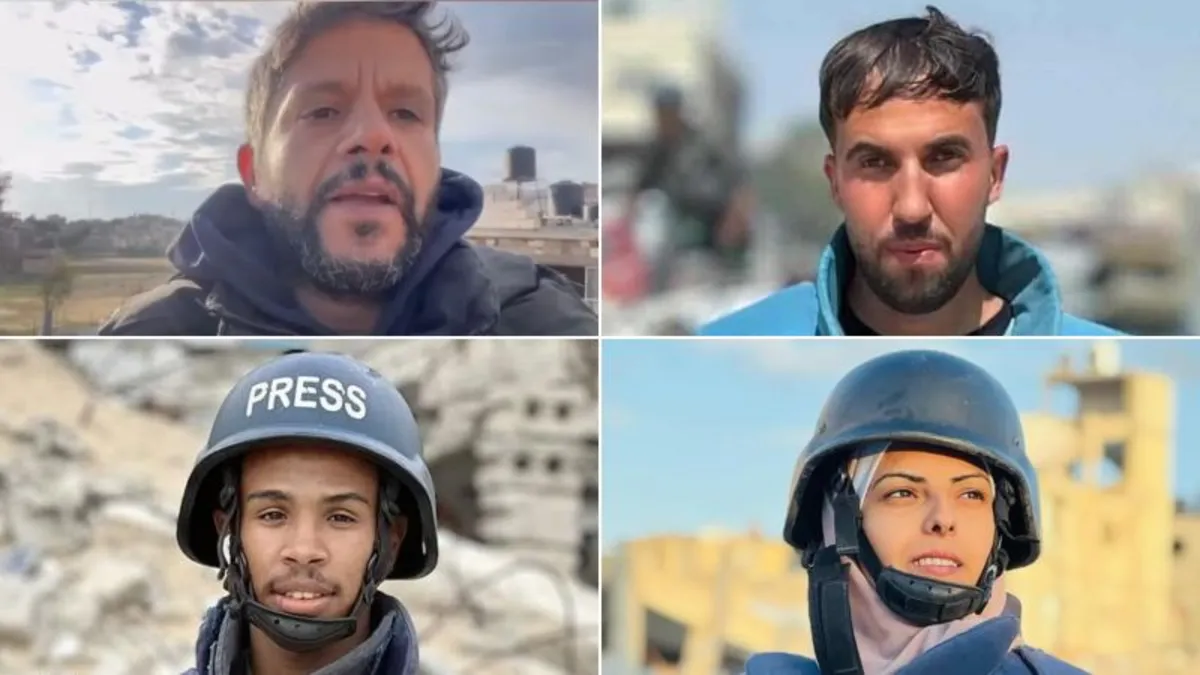
In a devastating incident, more than a dozen Palestinians were killed in a pair of Israeli airstrikes targeting the Nasser Medical Complex, a hospital located in southern Gaza. According to the Palestinian Ministry of Health, at least 20 individuals lost their lives during the attack on Monday, with many more sustaining injuries. The strikes occurred in Khan Younis and were executed within a matter of minutes, marking a horrific “double-tap” tactic that has raised significant concern among humanitarian organizations.
The Israeli strikes resulted in the deaths of several journalists and health workers who had rushed to the scene after the initial bombing. The Nasser Hospital confirmed that among those killed were Mohammad Salama, a cameraman for Al Jazeera; Hussam Al-Masri, a contractor for Reuters; and Mariam Abu Dagga, who had reported for the Associated Press and other outlets throughout the ongoing conflict. Moath Abu Taha, a freelance journalist, also lost his life in this tragic incident.
The first strike targeted the fourth floor of the Nasser Medical Complex, while a subsequent attack hit emergency responders and ambulance crews arriving to assist the victims of the initial bombing. The Israel Defense Forces (IDF) acknowledged in a statement that they conducted a strike in the vicinity of the hospital but claimed that they do not specifically target journalists. However, there was no acknowledgment of the two consecutive strikes or clarity on what the military was aiming to hit.
Eyewitness accounts from the scene illustrate the chaotic aftermath of the strikes. Video footage captured by Dr. Mohammad Saqer, a hospital spokesman, shows him holding a blood-soaked cloth after the first explosion, while another blast soon follows, engulfing the area in smoke. Al Ghad TV broadcasted live images of emergency workers navigating a damaged staircase at the hospital when the second strike occurred.
The attack has drawn widespread condemnation from various media organizations, including the Palestinian Journalists Syndicate, which described the incident as a “heinous massacre perpetrated by the Israeli occupation forces.” The organization emphasized that the strikes directly targeted media and journalistic crews, further endangering those who strive to report the reality of the conflict.
Among the journalists killed, Mariam Abu Dagga was particularly noted for her dedication to reporting on the conflict. Last year, CNN featured her story, highlighting her commitment to documenting the war despite the increasing danger to journalists. “We are covering the war on Gaza because this is our journalistic duty,” she had stated. Abu Dagga had been freelancing for the Associated Press since the conflict intensified and was known for her poignant reports on the dire humanitarian conditions faced by civilians.
In response to the tragic events, Hamas released a statement accusing the Israeli forces of attempting to deter journalists from exposing the truth about the conflict, including allegations of war crimes and ethnic cleansing. Additionally, the Committee to Protect Journalists (CPJ) reported that prior to this incident, Israel had already killed 192 journalists since the beginning of the Gaza conflict, marking a concerning trend that CPJ describes as the deadliest and most deliberate effort to silence journalists they have ever documented.
The loss of life in these strikes underscores the urgent need for accountability and protection of journalists and civilians in conflict zones. As the situation in Gaza continues to develop, the international community must remain vigilant and advocate for the safety of those reporting on the ground.